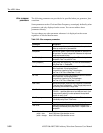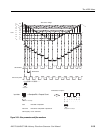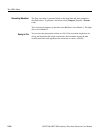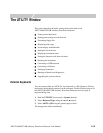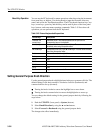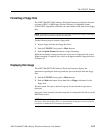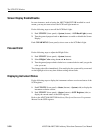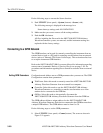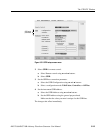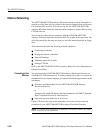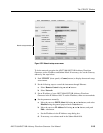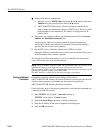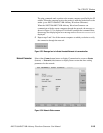
The UTILITY Window
3-160 AWG710&AWG710B Arbitrary Waveform Generator User Manual
Do the following steps to execute the Secure function:
1. Push UTILITY (front–panel)!System (bottom)!Secure (side).
The following message is displayed in the message box:
Secure destroys settings, and ALL DATA FILES
2. Make sure that you want to remove all the settings and data.
3. Push the OK side button.
All files, including the files used in the AWG710&AWG710B Arbitrary
Waveform Generator system, are removed, and the instrument settings are
replaced with the factory settings.
Connecting to a GPIB Network
The GPIB Interface can be used for remotely controlling the instrument from an
external device (such as a PC) and for capturing waveform data from an external
device (such as a Tektronix TDS–Series oscilloscope). This section describes how
to set up the instrument GPIB interface.
Refer to the AWG710&AWG710B Programmer Manual for information regarding
remote control commands. Refer to Capturing Waveforms on page 3-181 for
procedures and information regarding how to transfer waveforms from an external
device.
Setting GPIB Parameters
Configuration and Address are two GPIB parameters that you must set. The GPIB
Configuration contains three parameters:
Talk/Listen: Select this mode to remotely control the AWG710&AWG710B
Arbitrary Waveform Generator from an external host computer.
Controller: Select this mode to use the AWG710&AWG710B Arbitrary
Waveform Generator as a controller to transfer waveform data to or from
another device connected to the GPIB bus.
Off Bus: Select this mode to electronically disconnect the
AWG710&AWG710B Arbitrary Waveform Generator from the GPIB bus.
The GPIB address defines a unique address for the AWG710&AWG710B
Arbitrary Waveform Generator. Each device connected to the GPIB bus must have
a unique GPIB address. The GPIB address must be from 0 to 30.
Do the following steps to set the GPIB parameters:
1. Select UTILITY (front–panel)!Comm (bottom). The screen as shown in
Figure 3-51 appears.



